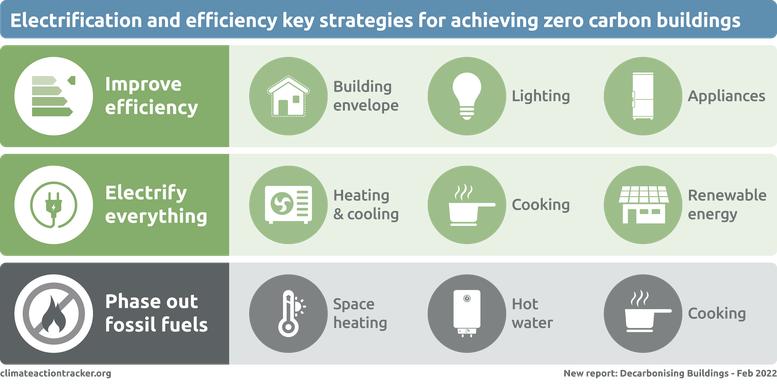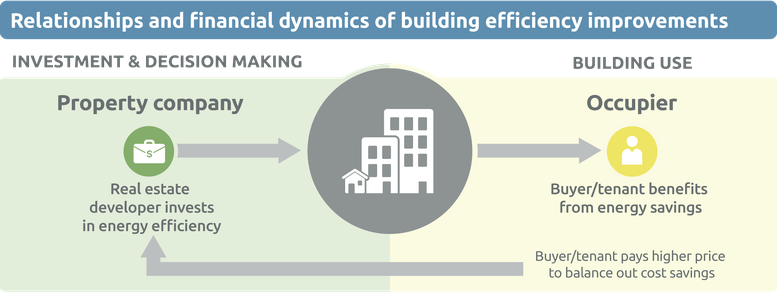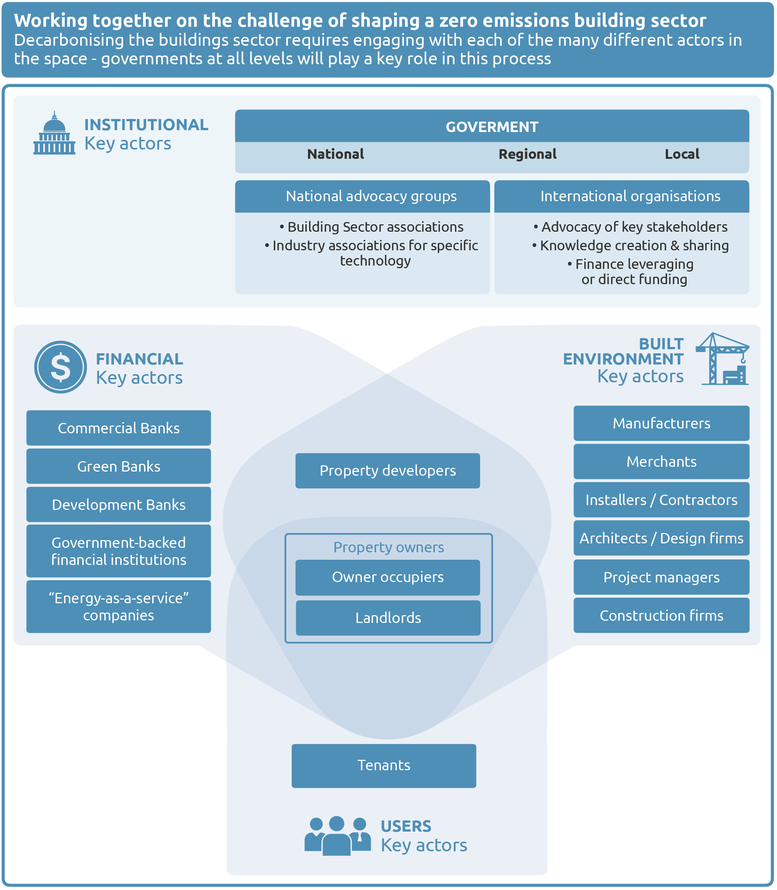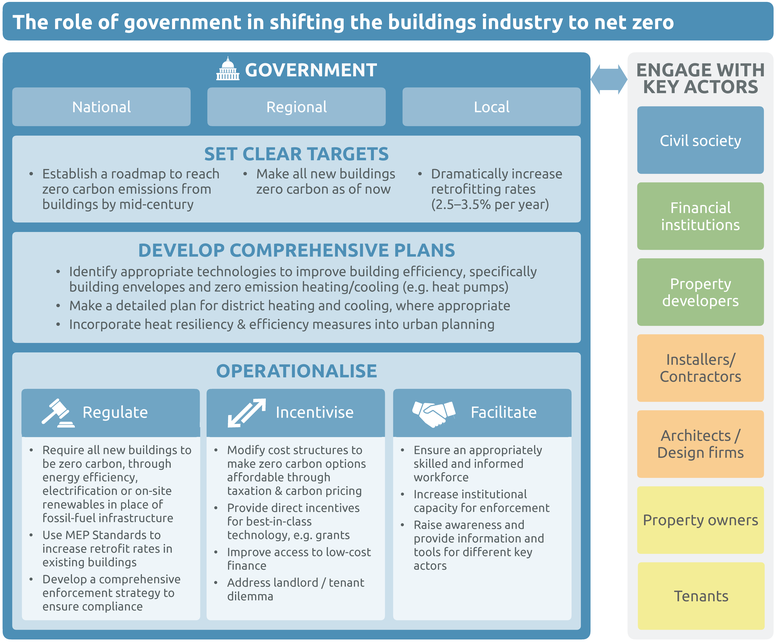Decarbonising buildings: achieving zero carbon heating and cooling
Attachments
Summary

The urgency of addressing emissions from buildings is clear; greenhouse gas (GHG) emissions from this sector make up roughly a fifth of total global emissions. Despite the rapidly diminishing global carbon budget and need for all sectors to decarbonise, buildings sector emissions have remained stubbornly consistent. While there is positive movement in some sectors – renewable energy, light-duty vehicles – decarbonising the buildings sector has been slow-moving. Why is there so little progress, and what would it take to initiate the kind of transformative change required?
A key reason behind the sector’s persistently high emissions is its diversity and complexity. Buildings come in all shapes and sizes, are used as residences or for commercial operations, and vary across a wide range of climate zones. The decarbonisation measures required for existing buildings also differ dramatically for those appropriate for ensuring new buildings are zero carbon.
Nonetheless, the range of technologies needed to achieve building sector decarbonisation are mature and widely available, it is their widespread adoption that is proving elusive.
What is inside?
The report outlines the broad set of actions that governments can include in their buildings sector decarbonisation strategies, with a specific focus on achieving zero carbon heating and cooling. The report is based on four vital elements: the technologies needed to replace carbon-intensive technologies, performance standards and building codes, costs and finance, and ways to engage the multitude of actors in the sector. For each element, the current state of play was summarised including a number of relevant case studies and key lessons outlined.
Element One - Technologies
Developing technological solutions is not the main challenge for transforming the buildings sector. Various technologically and commercially mature options to decarbonise heating and cooling are already available, including energy efficient building envelopes, heat pumps, and on-site renewables. The most appropriate technological strategy depends on the climatic conditions, building purpose, and existing infrastructure. This calls for tailor-made solutions for national and local circumstances.
Production markets for key technologies are well established. Some improvements in the efficiency of equipment are still possible but the bigger challenge is the actual uptake of zero carbon technology and implementation of energy efficiency measures. Accelerating uptake is dependent on many other factors, including regulation, finance and actors.
We address two key technologies- heat pumps and windows and explore in-depth how their uptake can be expedited.
Element Two – Minimum Energy Performance Standards
Minimum energy performance standards (MEPS) have been recognised by many as fundamental to transforming the sector. One third of nations have some type of energy efficiency requirement in building codes, but many do not have regulations in place for existing buildings and very few are stringent enough to ensure Paris Agreement compliance.
Improving the stringency, extent, and enforcement of building codes and standards is a necessary component of a building decarbonisation strategy. Building codes have been particularly effective where a long-term plan was developed with the involvement of key stakeholders and clearly communicated to those affected.
Utilising MEPS for increasing the retrofitting rate of existing buildings is particularly important. Trigger points for retrofits, such as a change in occupancy or specific years, need to be incorporated into regulations to speed up the rate of retrofitting and ensure all buildings are brought up to a zero-carbon standard by 2050 at the latest.
Element Three – Financing
In some cases, new or retrofitted zero carbon buildings are cheaper than more carbon-intensive alternatives, at least when considered over the lifetime of the building. Easy access to low-cost finance can reduce the perceived risk of high up-front costs and overcome financial barriers.
Alternative financial support arrangements are required to change the market through improving the cost-competitiveness of low carbon investments, addressing high upfront costs, and reducing financial risks. Multiple policy instruments are available and the most appropriate depends on the regulatory framework and financial situation of the country or region.
Element Four – Multitude of Actors
The buildings sector is complex. Each building requires a unique, multi-faceted approach to decarbonisation and has a different set of independent actors making decisions and providing relevant knowledge. For all buildings to be zero carbon, it is important to ensure that all relevant actors are sufficiently well-informed, motivated - and even incentivised - to adopt the zero-carbon options, and that the necessary skills are locally available to execute them.
The landlord-tenant dilemma – whereby the landlord is responsible for energy retrofits but the tenant benefits from reduced energy bills – can be a major obstacle in scaling up retrofitting rates. Incentives need to be put in place for landlords to act. Tested approaches include enforcement of building standards and rental agreements designed to allocate energy costs to the landlord.
“One stop shops” are a promising approach to solving some of the complexity challenges and improve retrofitting rates by making it easier. Here a property owner can get access to all the information they need regarding technical recommendations, financing options, and contact to verified contractors.
The key role of governments in decarbonising the buildings sector
As a complex challenge, reducing emissions in the buildings sector requires a comprehensive strategy to address its multiple facets. The buildings sector is unlikely to ‘tip’ with just a few initiatives from the private or public sector. Instead, it will require a wide range of actors to work together towards a Paris Agreement compatible sector.
Governments are in a unique position to effect change, as they can influence many of the wide range of actors and set the overall direction of the economy towards decarbonisation. In the final chapter - The key role of governments in decarbonising the buildings sector - we outline in detail what governments need to do.
Three major steps are required from national, regional, and local governments (Figure 2):
- Set out a clear vision and climate targets for the buildings sector.
- Develop a detailed strategy for decarbonisation at the national, regional, or local level.
- Operationalise the plan with a broad set of policies that regulate, facilitate, and incentivise the transition.
Operationalise the vision
A zero carbon buildings vision should inform the creation of a comprehensive policy package consisting of policies to regulate, incentivise and facilitate the transformation towards decarbonised space heating and cooling. This table provides an overview of available interventions governments can choose from. Governments need to ensure a broad selection of different intervention types and the more options taken, the higher the likelihood that the transition will be fast enough to meet the Paris Agreement goals.
Why should governments act?
Reducing emissions from buildings can have multiple other benefits when done well. Securing energy supply is a fundamental role of government and improving energy efficiency should be a major strategy for doing so. Pursuing electrification and decarbonising the power grid also reduces reliance on fossil fuel imports and increases energy independence, eliminating a source of energy price volatility. Further benefits of ambitious mitigation policies include cost-savings, and boosts to employment, health, productivity, and comfort for occupants.
While governments are key to transforming the buildings sector, other actors also have tools at their disposal to accelerate and push this transformation. One critical role is holding governments accountable for their promises and highlighting gaps in action. This is particularly relevant for developed countries’ governments, that have the capacity and responsibility to implement action in line with the Paris Agreement.
Read the full report
Click the button below to read the full report.
Stay informed
Subscribe to our newsletter





